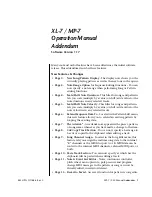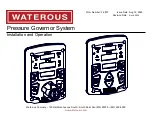
MAGNA
30. GLOSSARY
6129000-795
Issue 1.7
Printed on May,2020
61
Magna
Ametropia Compensation
Working Distance
Color Temperature
Field of View Diameter
Green Filter
Illumination Intensity
LED
Eyepiece
Convergent Beam Path
White Balance
DSLR Camera
CCD Camera
CMOS Camera
DBS
Rotoplate
Double Iris Diaphragm
IPD
Compensation of short-or-far-sightedness. This can be done for each
Eye using the two individual eyepieces (range: +5 to -5 diopters).
Distance from the common main objective (COM) to the object or area
Of interest.
Refers to the color characteristic of a light source. Using color
Temperature, one can set the color of a light source to warm or cold light
Relative to the color of natural light. The unit of measure for color
temperature is Kelvin (K).
The visible area of an object that can be seen through the microscope.
The greater the magnification level, the smaller the field of view and vice
versa.
A color filter that darkens red and blue light and brightens green light.
This improves the contrast of the images with red tones, improving the
Visibility of blood vessels.
Specifies the luminous flux from a light source onto a certain area. The
unit of measure for illumination intensity is Lux (Lx).
Light Emitting Diode. Electronic semiconductor device that emits light
when an electrical current passes through it.
The optical tubes through which the enlarged image produced by the
microscope can be viewed.
The tow light beams for the right and left eye run together at a point that
lies at a distance from the common main objective (CMO). This distance
is equal to the working distance.
White balance is used to calibrate the camera to the color temperature of the
light at the location.
(Digital Single Lens Reflex) camera with a digital imaging sensor.
(Charged Coupled Device) camera with a technology to store a charge
and move this charge out of the photo sensor in an organized way.
(Complementary Metal Oxide Semiconductor) camera in which images
sensor is a silicon chip that captures and reads light.
(Double Beam Splitter) splits light beam into two directions (one to eye
and one to side port) for simultaneous user viewing and photography,
videography, or co-observation. Ratio of light distribution is 70% for eyes
and 30% to side ports for photography, videography and co-observation.
The Rotoplate reduces neck craning, making it comfortable to view hard
to see regions of the mouth from the 9 and 3 o'clock seated positions.
The double iris diaphragm kit allows greater depth of field, which is
particularly valuable for photography.
Inter Pupillary Distance




































